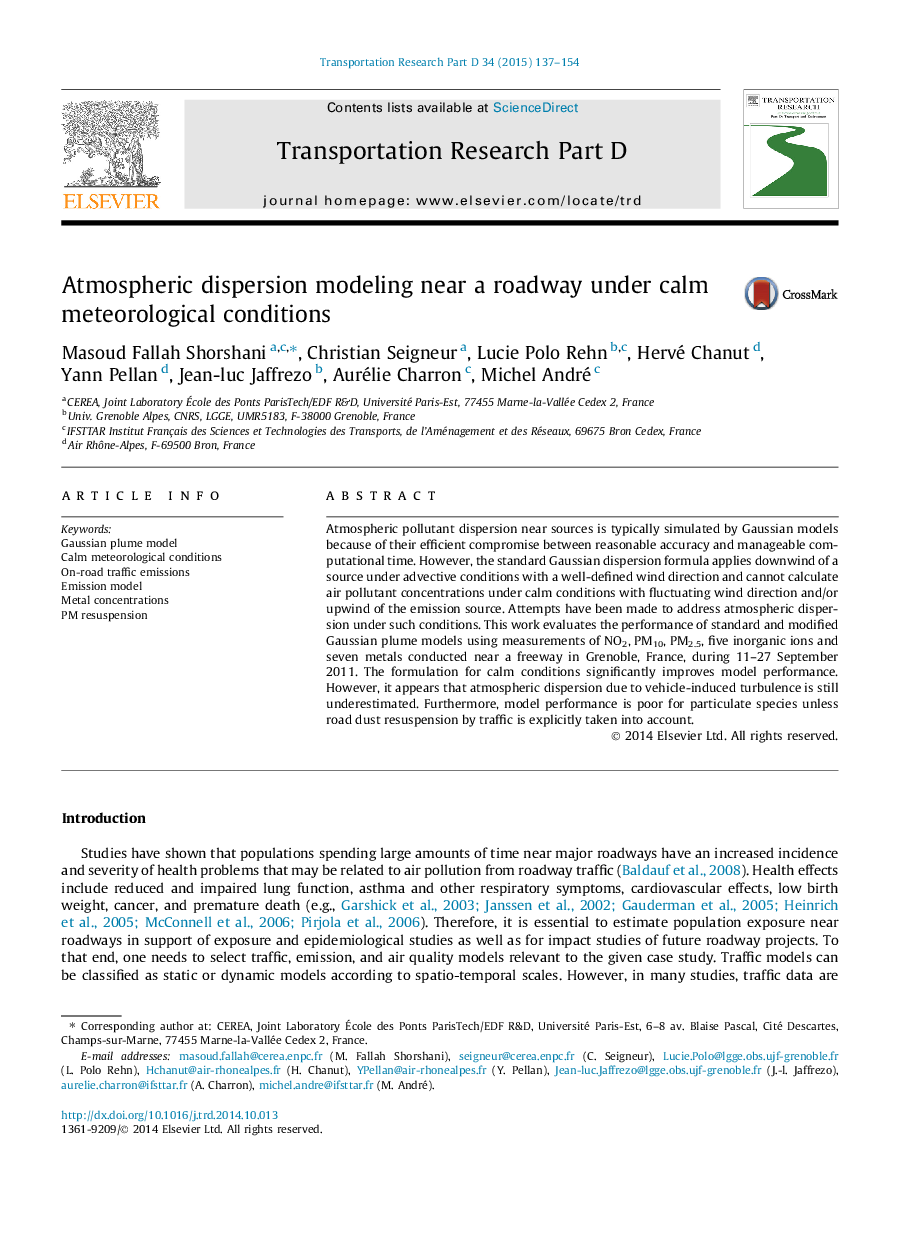| Article ID | Journal | Published Year | Pages | File Type |
|---|---|---|---|---|
| 7500655 | Transportation Research Part D: Transport and Environment | 2015 | 18 Pages |
Abstract
Atmospheric pollutant dispersion near sources is typically simulated by Gaussian models because of their efficient compromise between reasonable accuracy and manageable computational time. However, the standard Gaussian dispersion formula applies downwind of a source under advective conditions with a well-defined wind direction and cannot calculate air pollutant concentrations under calm conditions with fluctuating wind direction and/or upwind of the emission source. Attempts have been made to address atmospheric dispersion under such conditions. This work evaluates the performance of standard and modified Gaussian plume models using measurements of NO2, PM10, PM2.5, five inorganic ions and seven metals conducted near a freeway in Grenoble, France, during 11-27 September 2011. The formulation for calm conditions significantly improves model performance. However, it appears that atmospheric dispersion due to vehicle-induced turbulence is still underestimated. Furthermore, model performance is poor for particulate species unless road dust resuspension by traffic is explicitly taken into account.
Related Topics
Life Sciences
Environmental Science
Environmental Science (General)
Authors
Masoud Fallah Shorshani, Christian Seigneur, Lucie Polo Rehn, Hervé Chanut, Yann Pellan, Jean-luc Jaffrezo, Aurélie Charron, Michel André,
